Starting Procedure for Turbine Generator on Ship
The steam turbine is a heat engine that changes over the high temperature and high strain steam intensity energy to mechanical or electrical energy with its fixed and moving cutting edges and alternators. The steam turbine is an optimal central player and has various purposes. Bigger steam turbines are utilized to work generators in power plants, and more modest turbines can be utilized to run siphons and fans. Steam turbines can go from 0.5 to 200,000 HP.
Like every other machinery, the turbine generator of the ship also has proper standard operating procedures under sequential starting and shutting down procedures to avoid the trouble-free operation of the whole system. The correct procedure ensures that no part of the machinery goes through any kind of stress- thermal or mechanical. It also helps the ship to operate without wasting any extra time.
The correct operations for the Steam Turbine Generator on board the ship are as follows:
Pre-starting procedures
- The greasing of all bearing points should be monitored carefully.
- Cooling water should flow through all water cooling frameworks.
- Major mover power ( or steam, and so forth as the main impetus) should be checked.
- Pivot the Pump rotor manually.
- The level of fluid at the pull side ought to be checked.
- Conveyance valve shut for Centrifugal Pump if not conveyance valve ought to be open.
- The siphon ought to be warmed step by step by leisurely coursing hot fluid through the siphon.
- The spill-back line or sidestep line ought to be open.
Starting Procedures
- Check turbo generator lube oil sump level and drain it for water. Replenish it if the level is less than normal.
- Start the lube oil priming pump from the local station and check the lube oil pressure. Put the priming pump on auto.
- Check and fill up the Turbine Generator vacuum pump operating water tank to a normal level.
- Check vacuum condenser condensate level from the condensate pump. Put the pump on auto so that the level is maintained all the time.
- Operate the steam drain valve to drain any condensed water from the steam line to avoid excessive hammering and vibration while starting the turbo generator.
- Open the main steam inlet valve for the turbo generator.
- Adjust the gland steam pressure to a normal level.
- Check and open the seawater valves for the vacuum pump cooler, T/G lube oil cooler, and vacuum condenser is opened.
- Start the vacuum pump and bring up the vacuum in the condenser.
- Open condensate pump valves and switch on the pump.
- Check whether the condensate vacuum, gland steam pressure, steam inlet pressure, and lube oil pressure are normal.
- Start turbo generator from the local station and close the drain in the steam line.
- Check first and second stage steam pressure.
- Check condenser vacuum and water level.
- Check lube oil pressure and vibration levels.
- Check turbo generator speed, voltage, frequency, vacuum, condenser level and other parameters.
- Give control to the remote station from the local control and take the TG on load.
Post starting procedures
- Actively examine the steam temperature
- Temperature, pressure, flow, etc., should be thoroughly monitored.
- Check the temperature and vibrations of all bearing points
- Examine the Condenser vacuum framework appropriately.
- Monitor turbine ejector framework
- Keep typical the condenser level control framework.
- Carefully examine the spillage from the stuffing box.
Shutting down procedure
- Step by step, decrease the load to zero.
- Turn on the auxiliary oil siphon, and verify that the appropriate strain is kept up while the turbine is grinding to a halt.
- Trip the crisis valve. This valve additionally controls the vacuum breaker.
- The hole should be closed from the effort of high pressure; steam is conceded to the chamber at around one psi, and water is shut off.
- Shut down the inventory of cooling or gathering water.
- Close down the gathering gear, and open the channels on the turbine funnelling and packaging.
- Proceed with the auxiliary oil siphon function until the turbine rotor has halted.
- The condenser pneumatic pump is used to dry out the turbine in case it is left dormant for a longer period of time to cool to room temperature. Thus it helps to prevent the wearing off of hardware.
Maintenance of Steam Turbines
Stream Turbines are important for the production power for the main machines and the auxiliary machines onboard ships. Thus it is very crucial to maintain the steam turbine’s operation and performance to ensure high turbine reliability and smooth functioning of the ship and other machines related to it.
Some of the practices for ideal steam turbine operation are as follows:
Steam quality– Steam should be of the greatest quality. Condensate entanglement in the steam supply increases turbine steam rates decreases the steam turbine effectiveness and causes disintegration of steam turbine parts. If steam supply quality is sketchy, a mechanical mixing separator ought to be introduced before the turbine delta to forestall inferior quality steam, captured with condensate, from entering the turbine.
Pipe Expansion and Contraction- Steam piping ought to be inspected, examined, planned, and appropriately introduced to guarantee there will be no unnecessary powers communicated to the turbine spines.
Supply and Exhaust Line Sizing- Steam piping should be intended to give full-line steam strain at the turbine gulf at the full-load limit. The stockpile line size should be calculated for the heap, yet additionally to incorporate the strain drops because of the length of line and framework parts, including valves and fittings.
Steam Piping Supports- All steam funneling needs help with the extra weight of the line. The two kinds of help normally utilized practically speaking are inflexible and spring plans. The two kinds are intended to help the funneling, however not to support directing the line for development reasons. Nonetheless, an inflexible help can be utilized to limit the development of channelling in conjunction with an extension joint. Ordinary establishments utilize anchors, supports, and guides.
Precautions
- The steam should be superheated or supersaturated before reaching the turbine.
- Prior to starting the turbine, the administrator must get comfortable with the general channelling design, the working attributes of the unit, and the maker’s working guidelines. Lack of proper knowledge may result in fatal accidents.
- It should be noted that an enormous turbine has close clearances and that extension or mishandling can cause more harm than a small unit.
You may also like to read-Starting and Stopping Procedures of a Boiler on Ship
Do you have info to share with us ? Suggest a correction

About Author
An ardent sailor and a techie, Anish Wankhede has voyaged on a number of ships as a marine engineer officer. He loves multitasking, networking, and troubleshooting. He is the one behind the unique creativity and aesthetics at Marine Insight.
Latest Marine Technology Articles You Would Like:
- 10 Situations When Ship’s Generator Must be Stopped Immediately
- 10 Important Tests for Major Overhauling of Ship’s Generator
- 8 Important Points To Note For Maintenance Of Emergency Generators On Ship
- Understanding Different Operational Modes Of Shaft Generator On Ships
- Ways of starting and testing emergency generator
- What’s The Criteria For Reuse or Replacement of Auxiliary Engine Connecting Rod On Ships?
Subscribe To Our Newsletters
By subscribing, you agree to our Privacy Policy and may receive occasional deal communications; you can unsubscribe anytime.



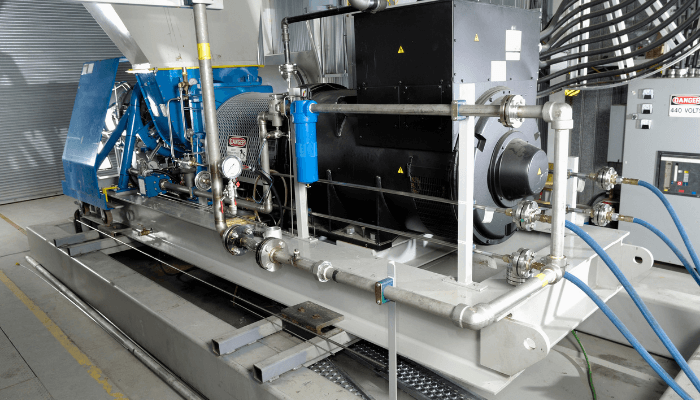







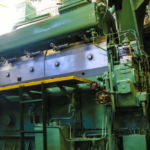
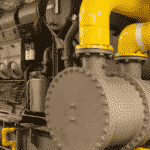
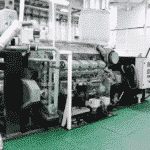
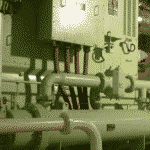
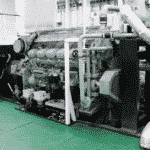
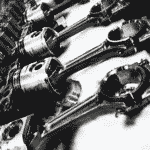
I would like to put up technical vocational school or just a small learning center regarding TURBINE GENERATOR for my country PHILIPPINES.
I hope you can HELP a lot more. We need to know more of this and probably buy a sample mock-up for the students to know and understand more of this. Keep it Up.
Thanks,
Menardo J. dela Paz
Dear Sir
Kindly inform you we have 3 acid sulphoric production plant that 2-5 ton per hour steam have generated in above mentioned plants.
Now ,we are going to generate electricity power from that steam .
Our steam specification :
2-5 ton per hour
5-7 bar Pressure
150-170 Centigrade
Please suggest us best turbine generator for our purpose.
Thanks.
S.Taghizadeh
This explanation is not full. There are missing very important steps as: critical speed, some safety trips which must be tested and time allowance for warming up.
I am studding for the oral exam and I needed something more simple than the manufacture’s procedure. Sorry but this is not applicable for an answer of any exam.
so good for larning for mechanicla eng’
tks a lot
@Si the: Glad the content is useful . Please do share and support ??